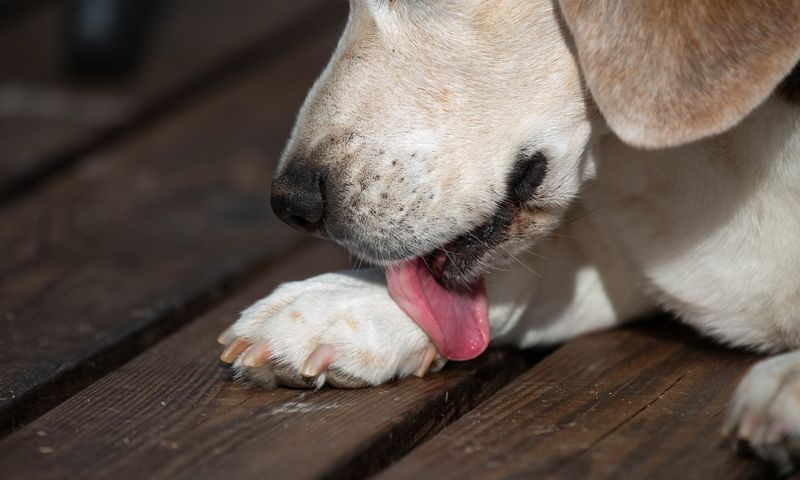Understanding your dog’s emotional wellbeing is crucial for their happiness and health. Dogs communicate their feelings in various ways, and recognizing signs of unhappiness can improve their quality of life. This blog explores 13 signs your dog may be unhappy and how you might be contributing, helping you to foster a more joyful relationship with your canine friend.
Lack of Appetite
A sudden lack of interest in food may signal your dog’s unhappiness. Dogs, like humans, can lose their appetite when stressed or anxious. Consider if recent changes in your home might be affecting their mood.
It’s important to ensure they are not unwell, but emotional distress can also be a factor. Reflect on any changes that could have sparked this reaction.
Providing a consistent and calm environment, along with their favorite meals, might restore their eagerness to eat. Consult a vet if the problem persists, as it could point to an underlying health issue.
Excessive Sleeping
Dogs who sleep more than usual might be signaling discontent. While it’s normal for dogs to nap, excessive sleeping may indicate boredom or depression.
Think about whether your pet is getting sufficient exercise. A sedentary lifestyle can contribute to this behavior.
Try to engage them in interactive play or walks to lift their spirits. If your dog continues to sleep excessively despite increased activity, a vet check-up can rule out medical causes. Ensuring mental stimulation is essential to maintaining their happiness.
Destructive Behavior
Destruction at home may be your dog’s way of expressing unhappiness. Chewing furniture or shoes can be a sign of stress or separation anxiety.
Examine your dog’s daily routine for potential stressors. Have there been changes in your schedule affecting their alone time?
Providing engaging toys and ensuring they receive adequate attention can help redirect this behavior. Consult with a pet behaviorist if needed to modify these actions effectively. Such destructive behavior often stems from underlying emotional needs not being met.
Lack of Interest in Play
When a dog loses interest in playtime, it’s often a cry for help. This change in behavior might indicate emotional distress or boredom.
Consider any recent shifts in your routine affecting their play schedule. Are they getting enough interactive time with you?
Reintroducing varied toys and activities can rekindle their interest. Sometimes, all it takes is a little encouragement and attention to revive their playful spirit. If the disinterest persists, it might be worth consulting with a veterinarian.
Frequent Barking or Whining
Increased vocalization, such as barking or whining, can be a sign of an unhappy dog. Dogs often use their voices to communicate discomfort or loneliness.
Reflect on whether their needs for social interaction and exercise are being met. Changes in the environment could be triggering their vocal outbursts.
Providing reassurance and company might alleviate their vocal distress. Engaging them in activities that require focus can also reduce unnecessary barking. Should the behavior continue, consulting a professional trainer could offer solutions tailored to your dog’s needs.
Hiding or Avoidance
If your dog is hiding more frequently, they may be feeling insecure or frightened. This behavior often reflects stress or anxiety regarding changes in their environment.
Evaluate any recent changes in household dynamics that might be affecting them. Are there new pets or family members at home?
Creating safe spaces where they feel secure and offering comfort can encourage them to come out. Consistent reassurance and patience are key. Consulting a veterinarian or a pet behavior specialist can provide additional insights if avoidance continues.
Aggression or Irritability
Aggressive behavior in dogs might be more than just a bad mood. It can signal underlying unhappiness or discomfort.
Assess any recent changes that might have provoked this reaction, such as alterations in their daily routine. Is your dog getting enough exercise and social interaction?
Addressing these needs can help mitigate aggression. It’s vital to approach this carefully and, if needed, with professional guidance to ensure both your safety and your dog’s wellbeing. Identifying triggers can significantly improve their demeanor.
Loss of Interest in Social Interaction
Social withdrawal can be a clear indicator of a dog’s unhappiness. If they begin avoiding other dogs or people, it might reflect emotional distress.
Review any recent events that might have contributed to this, such as a traumatic experience or a change in social dynamics. Are they feeling neglected?
Increasing positive social experiences and monitoring their interactions can boost their confidence. Consistent, gentle encouragement can help restore their social nature. If the behavior persists, consulting a vet or a behaviorist might uncover underlying issues.
Changes in Grooming Habits
A dog that neglects grooming may be experiencing emotional distress. Changes in their grooming habits might signal an underlying issue.
Consider whether there have been changes in their environment or routine that might have affected them. Are they receiving enough care and attention?
Regular grooming sessions not only maintain their coat but also strengthen your bond. Engaging in these sessions can provide comfort and improve their mood. If the issue persists, consulting with a professional groomer or veterinarian may be necessary to address any deeper concerns.
Panting or Shivering without Physical Cause
Panting or shivering without an apparent reason can denote stress or anxiety in dogs. Such physiological responses often arise when they’re uneasy.
Reflect on any changes that might have induced stress, such as loud noises or unfamiliar environments. Are they feeling secure and safe?
Providing a calming presence and a familiar setting can ease these symptoms. Sometimes, comforting scents or soothing music can help. If these signs persist, seeking a vet’s advice is crucial to rule out any health issues.
Changes in Bathroom Habits
Sudden changes in bathroom habits may indicate your dog’s unhappiness or anxiety. Accidents indoors can be their response to stress or changes in routine.
Consider if there have been disruptions in their usual schedule or environment. Are they feeling secure in their space?
Re-establishing a consistent routine and providing reassurance can help prevent these incidents. Positive reinforcement and patience are key to rebuilding their confidence. Persistent issues should be discussed with a veterinarian to rule out medical causes.
Obsessive Behaviors
Obsessive behaviors, such as licking or tail chasing, may be signs of emotional distress in dogs. These repetitive actions often point to underlying anxiety or boredom.
Analyze potential stressors in their environment that could have led to this behavior. Are they getting enough mental stimulation?
Introducing new toys or activities can redirect their focus and alleviate stress. Engaging them in training or interactive play can also provide mental enrichment. If obsessive behaviors continue, consulting a vet can help identify possible medical or psychological causes.
Eyes and Ears Change in Expression
A dog’s eyes and ears can tell a lot about their emotional state. Sad eyes or drooping ears often reflect unhappiness or discomfort.
Observe if there have been any changes in their daily routine affecting their mood. Are they missing quality time with you?
Spending more time bonding and offering affection can uplift their spirits. Sometimes, just being present and attentive can make a significant difference in their emotional well-being. Persistent changes in expression might warrant a vet visit to rule out health concerns.













